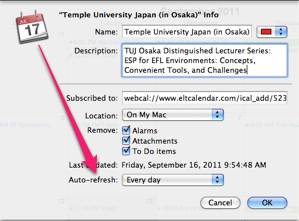Tokyo JALT:
Expressing Causation in English and Japanese
Date: Friday, July 20th, 2007 Time: 7:00 PM - 8:30 PM
Speaker: Dr. Chikako Shigemori Bucar (University of Ljubljana)
Description:
The Japanese causative (the affix -(s)ase-, "shieki") is usually taught in the latter half of the beginners level, about the same time when learners are introduced to passive, giving and receiving verbs, various conjunctions to build longer sentences, and so on. Existing sources point out that the learners are not eager to use this causative affix in their production in Japanese. In case of English speaking learners, we may suspect that they lack confidence in using it, since there is no comparable morpheme in their mother tongue. Added to this, the Japanese morpheme -(s)ase- has various functions, i.e. besides causation, it may express non-interference, permission, transitive action etc. Inside Japanese, the causative affix seems to appear more in literary texts, and much less in newspaper articles and/or everyday conversation.
Based on contrastive research and corpus studies the presenter will explore whether the causative should really be taught at the beginner's level as is presently the case
Space is limited for participation in this seminar. If you are interested in attending, please contact Megumi Kawate-Mierzejewska at seminar2006jaltokyo@gmail.com
Organization: Tokyo Chapter of the Japan Association for Language Teaching (Tokyo JALT)
Cost: JALT Members: free
Non-members: 1,000 yen
Venue: Temple University Japan (Minamiazabu campus)
Location: Tokyo, Tokyo Metropolis, Japan
![]() Add this to iCal
Add this to iCal
![]() (Need help?)
(Need help?)
![]() Add to Outlook
Add to Outlook
![]() (Need help?)
(Need help?)
Contact Tokyo JALT
Website: http://sites.google.com/view/tokyojalt
Email QR Code:
Email QR Code:








